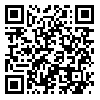Volume 10, Issue 3 (6-2007)
J Arak Uni Med Sci 2007, 10(3): 87-93 |
Back to browse issues page
Download citation:
BibTeX | RIS | EndNote | Medlars | ProCite | Reference Manager | RefWorks
Send citation to:



BibTeX | RIS | EndNote | Medlars | ProCite | Reference Manager | RefWorks
Send citation to:
Rahimi M, Mashhadi E, Karimi E. The Relationship between diabetes and hearing impairment. J Arak Uni Med Sci 2007; 10 (3) :87-93
URL: http://jams.arakmu.ac.ir/article-1-80-en.html
URL: http://jams.arakmu.ac.ir/article-1-80-en.html
1- , dr_mashhadi37@yahoo.com
Abstract: (17136 Views)
Introduction: Diabetes mellitus is a chronic disease that has well known effects on most organs, but there have been controversies in few different studies about the effects of diabetes on hearing. So this study was carried out in 2003-2004 in Kermanshah Diabetes Research Center to assess the effect of diabetes on hearing. Materials and Methods: This is a case-control study. 82 diabetic cases (26 types I and 56 type 2 cases) were studied along with 82 controls matched both in age and sex. Cases were selected randomly, their range of age was 15 to 55 years and their duration of diabetes was more than 3 years. After completing questionnaires, all cases and controls undergone autoscopic examination. Those with other ear disease with hearing impairment were omitted. Audiometery including pure tone audiometery, speech audiometery, and impedance audiometrey with well tone AD19 formed was done on 164 (diabetic and control) persons. Data was analyzed using t-test. Results: Audiometric findings with different frequencies in the two groups revealed that there was a significant relationship between diabetes and hearing impairment (p<0.001). This relationship was more significant in high frequencie, older age and type 2 diabetes, but there were no relationship between control of blood sugar (HbA1c), duration of diabetes, sex, microvascular and macrovasculur complications with hearing loss in diabetic patients. Conclusion: These finding demonstrate that diabetes can cause mild to moderate hearing impairment especially in high frequencies. The mechanism of this effect is unknown. Complementary studies with more patients and with more accurate devices such as Otoacustic Emission (OAE) and Audiometric Brainstem Reflex (ABR) are recommended
Subject:
General
Received: 2008/10/18
Received: 2008/10/18
Send email to the article author
| Rights and permissions | |
 |
This work is licensed under a Creative Commons Attribution-NonCommercial 4.0 International License. |





